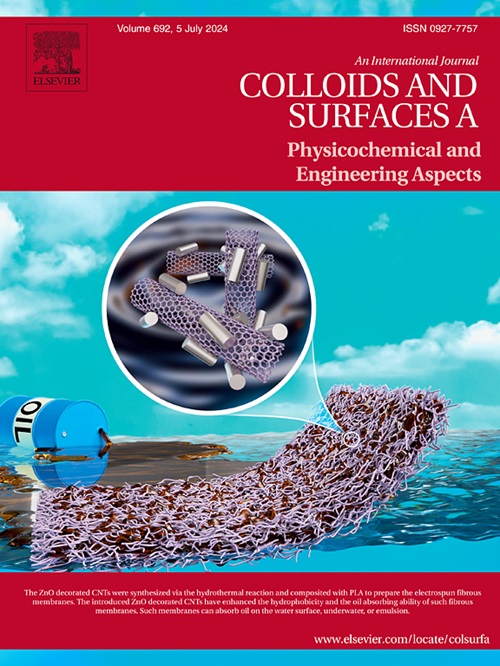第二种材料的 OER 活性对铂合金 MOR 耐久性增强的关键作用
IF 4.9
2区 化学
Q2 CHEMISTRY, PHYSICAL
Colloids and Surfaces A: Physicochemical and Engineering Aspects
Pub Date : 2024-11-04
DOI:10.1016/j.colsurfa.2024.135702
引用次数: 0
摘要
铂基贵金属催化剂因其固有的高甲醇氧化(MOR)活性,被普遍认为是直接甲醇燃料电池的最佳催化剂材料。然而,铂催化剂的商业应用仍然面临着严重的耐久性问题。甲醇不完全氧化形成的 CO 会占据铂的活性位点,阻碍 MOR 反应的进一步进行,导致活性迅速衰减。本文报告了一种与第二种材料 M(M=Ni、Co、Fe 和 Cu)的 OER 性能相关的 MOR 耐久性增强策略。精确的电化学测试结果表明,铂-锰合金的 MOR 耐久性随第二种材料的变化而变化,这与 M 材料的 OER 活性有关。M 材料的过电位和塔菲尔斜率越小,MOR 耐久性越好。通过对 M 材料的筛选,M 材料中 OER 过电位最低的 Co 元素促进了 MOR 耐久性最高的铂钴合金材料的产生,使其在仅有 0.53 A mg-1Pt 质量活度损失的情况下维持了 7000 次 CV 循环,耐久性极佳。根据目前公认的 OER 和 MOR 反应机理,MOR 耐久性与 OER 活性的关联很可能来自于 M-OH 形成的同一反应步骤,而 M-OH 在这两个反应中都起着关键作用。OER过电位与MOR耐久性之间的关系有助于从OER活性的角度筛选第二种材料,从而提高铂催化剂的MOR耐久性,这对开发铂基抗CO MOR催化剂具有重要意义。本文章由计算机程序翻译,如有差异,请以英文原文为准。
The key role of the second material's OER activity on MOR durability enhancement of the Pt alloys
Pt-based precious metal catalysts are generally regarded as the best catalyst materials for direct methanol fuel cells due to their high inherent methanol oxidation (MOR) activity. However, the commercial application of Pt catalyst is still facing with severe durability problem. The CO formed by the incomplete oxidation of methanol will occupy the Pt active site, hindering the further progress of the MOR reaction and causing the rapid attenuation of the activity. In this work, a MOR durability enhancement strategy that relation to the OER performance of the second materials M (M=Ni, Co, Fe and Cu) is reported. The precise electrochemical test results showed that the MOR durability of Pt-M alloy changes with the second material, which is related to the OER activity of M materials. The smaller the overpotential and tafel slopes of the M material, the better the MOR durability. Via M material screening, the Co element with the lowest OER overpotential among M promoted the Pt-Co alloy material with the highest MOR durability, resulting an excellent durability sustain 7000 times CV cycles with just 0.53 A mg−1Pt mass activity loss. According to the current generally accepted OER and MOR reaction mechanism, the association of MOR durability with OER activity is most likely derived from the same reaction step of M-OH formation, which played a key role on both reaction. This relationship between OER overpotential and MOR durability helps to screen the second material from the perspective of OER activity to improve the MOR durability of Pt catalysts, which is of great significance for the development of Pt-based CO-resistant MOR catalysts.
求助全文
通过发布文献求助,成功后即可免费获取论文全文。
去求助
来源期刊
CiteScore
8.70
自引率
9.60%
发文量
2421
审稿时长
56 days
期刊介绍:
Colloids and Surfaces A: Physicochemical and Engineering Aspects is an international journal devoted to the science underlying applications of colloids and interfacial phenomena.
The journal aims at publishing high quality research papers featuring new materials or new insights into the role of colloid and interface science in (for example) food, energy, minerals processing, pharmaceuticals or the environment.

 求助内容:
求助内容: 应助结果提醒方式:
应助结果提醒方式:


